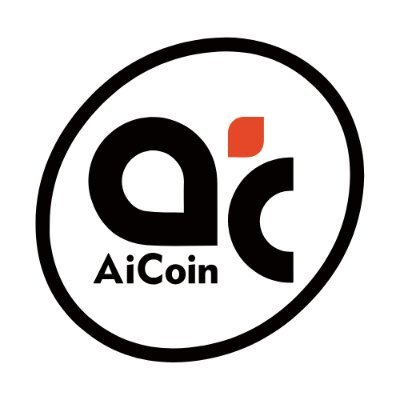Breaking: Nasdaq Files for a Multi-Asset Crypto ETF – Will the SEC Approve It?
As per the source, Nasdaq has filed for approval from the U.S. Securities and Exchange Commission (SEC) to introduce an exchange-traded fund (ETF) that offers investors exposure to a diversified basket of digital assets. This initiative aims to provide a regulated avenue for both retail and institutional investors to engage with multiple cryptocurrencies through a single investment vehicle.
The Nasdaq Crypto Index (NCI): A Benchmark for Digital Assets
To support this ETF, Nasdaq has co-developed the Nasdaq Crypto Index (NCI) in partnership with Hashdex, a prominent global crypto-focused asset manager. The NCI is designed to reflect the performance of a broad spectrum of the cryptocurrency market, ensuring that only assets meeting stringent liquidity, market capitalization, and custody standards are included. As of February 20, 2025, the NCI’s composition includes:
Bitcoin (BTC): 74.71%
Ethereum (ETH): 11.73%
Ripple (XRP): 6.59%
Solana (SOL): 4.24%
Cardano (ADA): 1.37%
Litecoin (LTC): 0.48%
Chainlink (LINK): 0.45%
Avalanche (AVAX): 0.25%
Uniswap (UNI): 0.19%
This diversified approach aims to mitigate the volatility associated with individual cryptocurrencies by providing balanced exposure across multiple digital assets.
Growing Institutional Interest and Market Impact
The cryptocurrency sector has witnessed a surge in institutional adoption, especially following the SEC’s approval of spot Bitcoin ETFs in early 2024. These ETFs have collectively amassed over $120 billion in assets under management within a year, signaling robust demand from institutional investors. The introduction of a diversified crypto ETF by Nasdaq is poised to further accelerate this trend, offering a more comprehensive investment option that appeals to a broader audience.
Industry experts anticipate that such innovations will “turbo-charge the crypto ETF industry,” leading to increased liquidity and potentially more stable pricing in the cryptocurrency markets. However, regulatory challenges persist, particularly concerning the classification of various digital assets as commodities or securities, which could impact the ETF’s composition and approval process.
Conclusion
Nasdaq’s proactive approach in developing a diversified crypto ETF underscores the evolving landscape of digital asset investments. By collaborating with Hashdex to create the Nasdaq Crypto Index, Nasdaq aims to provide investors with a regulated and efficient means to gain exposure to the burgeoning cryptocurrency market. As the SEC reviews this proposal, the financial community eagerly awaits a decision that could further legitimize and expand access to digital assets.
FAQs
What is the Nasdaq Crypto Index (NCI)?
The NCI is a benchmark index co-developed by Nasdaq and Hashdex to track the performance of a diversified basket of cryptocurrencies. It ensures inclusion based on strict liquidity, market capitalization, and custody standards.
Which cryptocurrencies are included in the NCI?
As of February 20, 2025, the NCI includes Bitcoin, Ethereum, Ripple (XRP), Solana, Cardano, Litecoin, Chainlink, Avalanche, and Uniswap.
How does a diversified crypto ETF benefit investors?
A diversified crypto ETF offers exposure to multiple cryptocurrencies within a single investment, potentially reducing the risk associated with investing in a single digital asset.
What regulatory challenges could affect the approval of Nasdaq’s crypto ETF?
The SEC’s classification of digital assets as either commodities or securities plays a crucial role in the approval process, as it determines the regulatory framework applicable to the ETF.
When is the expected decision from the SEC regarding Nasdaq’s crypto ETF proposal?
While the exact timeline is uncertain, the SEC typically reviews ETF proposals within a few months. The financial community is closely monitoring for updates.
Glossary of Key Terms
Exchange-Traded Fund (ETF): An investment fund that trades on stock exchanges, holding assets such as stocks, commodities, or bonds, and offers investors a proportionate share in the fund’s assets.
Nasdaq Crypto Index (NCI): A benchmark index developed by Nasdaq and Hashdex to measure the performance of a diversified basket of cryptocurrencies.
Securities and Exchange Commission (SEC): The U.S. federal agency responsible for enforcing federal securities laws and regulating the securities industry.
Spot Bitcoin ETF: An ETF that provides direct exposure to Bitcoin by holding the actual cryptocurrency, as opposed to futures-based ETFs that hold derivative contracts.
Institutional Investors: Organizations that invest large sums of money into securities, real estate, and other investment assets; examples include banks, insurance companies, pensions, and hedge funds.
Liquidity: The ease with which an asset can be bought or sold in the market without affecting its price.
Market Capitalization: The total market value of a cryptocurrency, calculated by multiplying its current price by its total supply.
Custody Standards: Regulations and practices ensuring that digital assets are securely stored and managed on behalf of investors.
Commodity vs. Security: A commodity is a basic good used in commerce that is interchangeable with other goods of the same type, while a security represents an ownership position in a corporation (stock), a creditor relationship with a governmental body or corporation (bond), or rights to ownership as represented by an option.
Sources
nasdaq.com
ft.com
Are XRP and DOGE Preparing for 25% Price Moves?
TL:DR
The popular crypto analyst Ali Martinez outlined possible positive scenarios for DOGE and XRP, which could send both assets up by around 25%.
However, the landscape around Ripple’s cross-border token is somewhat worrisome, according to another indicator.
#Dogecoin $DOGE could be on the verge of a 25% move as it nears a breakout from this symmetrical triangle! pic.twitter.com/Vf5OgIgRBU
— Ali (@ali_charts) February 20, 2025
In terms of the world’s largest meme coin, Martinez noted that it nears a breakout from a symmetrical triangle. The asset has been stuck within it ever since the early February crash when the entire market bled out in hours. DOGE’s price tumbled from over $0.3 to a multi-month low of $0.22.
In the following two and a half weeks, Dogecoin failed to break above it as it was stopped at the upper boundary at $0.28, and then the bulls defended the lower one at $0.244.
With its price currently sitting at around $0.255, a 25% move to the upside will send it to over $0.3.
The landscape around XPR is similar, but the triangle is slightly different – it’s an ascending one. In case the third-largest cryptocurrency manages to break above it, its price could experience a 26% surge, Martinez said, which would mean a price tag of roughly $3.4.
Data from CoinGecko shows that this is the current all-time high, which XRP tested in early January but failed to breach. Ripple’s token certainly has some bullish sentiment going its way, mostly related to ETFs. Brazil is set to launch its first spot one tracking the asset’s performance, while several US-based applications have been officially recognized by the SEC.
Nevertheless, Martinez also warned that another technical indicator suggests that XRP could be headed for a correction. The TD Sequential Indicator, which shows the market’s exhaustion in either direction, flashed a sell signal on the 3-hour chart after the asset’s recent rally.
$XRP could be gearing up for a pullback, as the TD Sequential indicator flashes a sell signal on the 3-hour chart after the recent 11% rebound! pic.twitter.com/k8SetFIQ8F
— Ali (@ali_charts) February 20, 2025
The post Are XRP and DOGE Preparing for 25% Price Moves? appeared first on CryptoPotato.
Legendary Cypherpunk Claims Bitcoin Is in the ‘Early Stages’ of a Bull Market
While bitcoin prices have been somewhat stagnant in recent weeks, there are those who believe there is still room for growth. Adam Back, a British cryptographer and cypherpunk whose name appears in the Bitcoin whitepaper, recently stated that while there has been some consolidation in the market, bitcoin is ready to reach new heights due to fundamental market dynamics.
In an interview with CNBC, Back highlighted that we could be in the early stages of a bitcoin bull market. “Typically the bull market cycle lasts for a certain period after the halving and so we’re still in the early innings,” Back stressed, highlighting the increased demand for bitcoin that both institutions and retail were exerting in the wider market.
Back remarked that there was strong demand from bitcoin exchange-traded funds (ETFs), instruments that allow institutions to invest in bitcoin without worrying about custody. He estimated that the demand from these sources is roughly double the daily bitcoin production.
He also counted on one of the largest sources of demand in the market today: Michael Saylor’s Strategy, which is also siphoning twice the number of bitcoin produced each day. This means that only these two sources are absorbing four times the bitcoin produced, foreshadowing an incoming bitcoin supply shock.
Nonetheless, if the sovereign treasuries come in, with countries buying bitcoin for their country reserves, Back states that prices would skyrocket. Nations would have to compete with other traditional demand sources for the bitcoin available in the market.
“You’d see sovereign competition. As soon as one of the bigger countries jumps in, I think the others will feel forced to follow suit so that would you know all bets would be off if that happens,” Back concluded.
Read more: The Many Facts Pointing to Adam Back Being Satoshi Nakamoto
免责声明:本文章仅代表作者个人观点,不代表本平台的立场和观点。本文章仅供信息分享,不构成对任何人的任何投资建议。用户与作者之间的任何争议,与本平台无关。如网页中刊载的文章或图片涉及侵权,请提供相关的权利证明和身份证明发送邮件到support@aicoin.com,本平台相关工作人员将会进行核查。
Japan Approves Measures to Enhance User Protection in Stablecoin Market
The Japanese Financial Services Agency (FSA) has approved measures to make stablecoin collateral management more flexible. The approval also aims to make it easier to protect Japanese users from the transfer of their assets from the local subsidiary of a foreign-owned cryptocurrency exchange platform during bankruptcy proceedings.
According to a Coin Post report, the proposed stablecoin collateral management allows digital assets to be backed by short-term government bonds and certain fixed-term deposits, in addition to current demand deposits. The report adds that the objective is to set an upper limit of 50% on the amount of new assets that can be incorporated.
Under this regime, stablecoin issuers targeting the Japanese market will be able to manage their funds across several financial products, which in turn boosts their profitability and liquidity. Depending on the system design, additional mechanisms may be necessary to ensure adequate user protection, the report added.
Japanese Finance Minister Katsunobu Kato reportedly lauded the steps taken to further enhance the protection of digital asset users.
“I want to create an environment in which users can use highly convenient remittance settlement services with peace of mind,” Kato reportedly said.
Approval of these measures enables the FSA to begin the process to partially revise the Trust Business Act and amend the Payment Services Act.
Meanwhile, the proposed regulatory change would create a new “intermediary business” category, easing registration requirements and anti-money laundering obligations for businesses that facilitate cryptocurrency transactions but do not hold user assets.
免责声明:本文章仅代表作者个人观点,不代表本平台的立场和观点。本文章仅供信息分享,不构成对任何人的任何投资建议。用户与作者之间的任何争议,与本平台无关。如网页中刊载的文章或图片涉及侵权,请提供相关的权利证明和身份证明发送邮件到support@aicoin.com,本平台相关工作人员将会进行核查。


 Preço mais baixo
Preço mais baixo Preço mais alto
Preço mais alto 













































